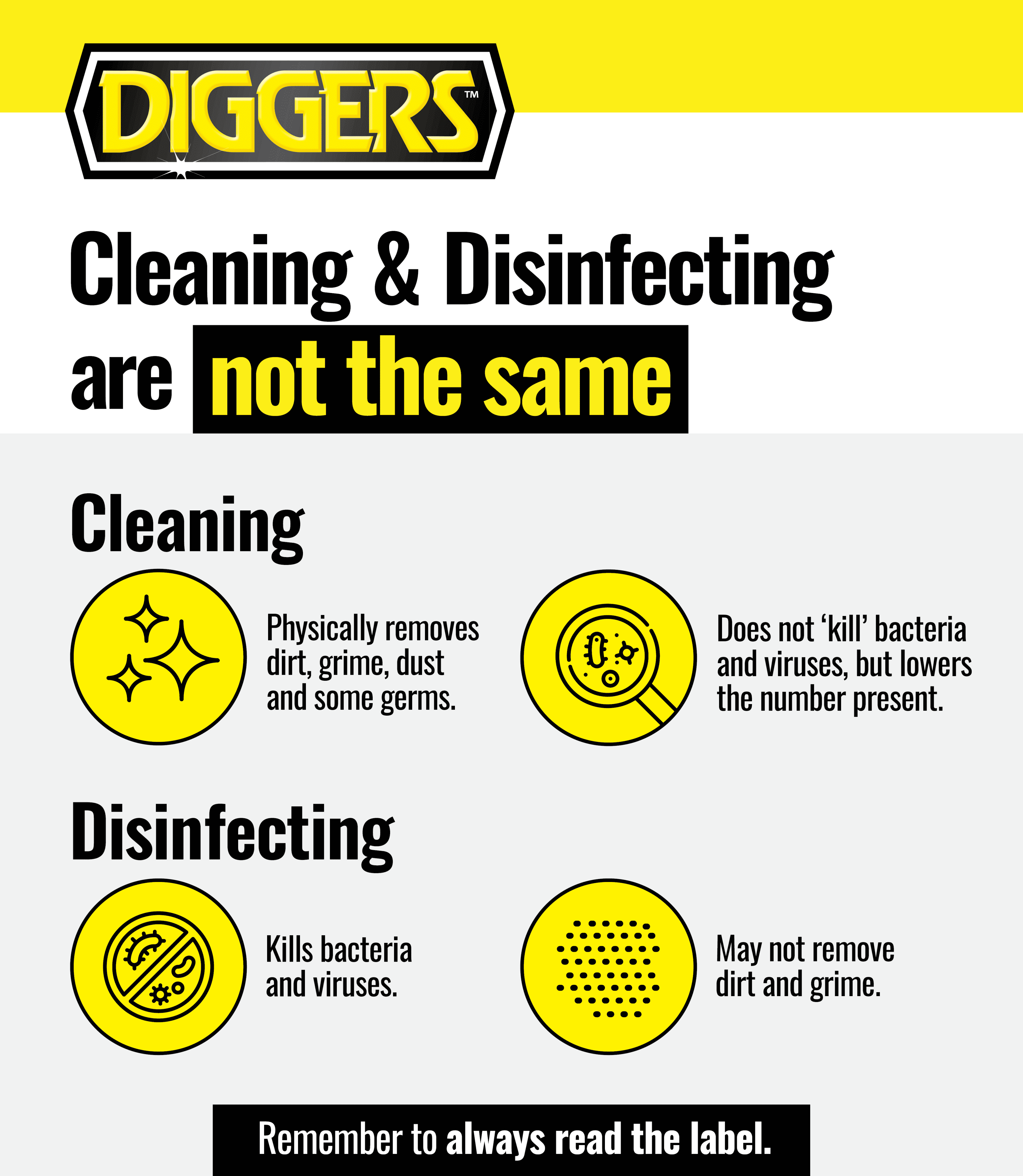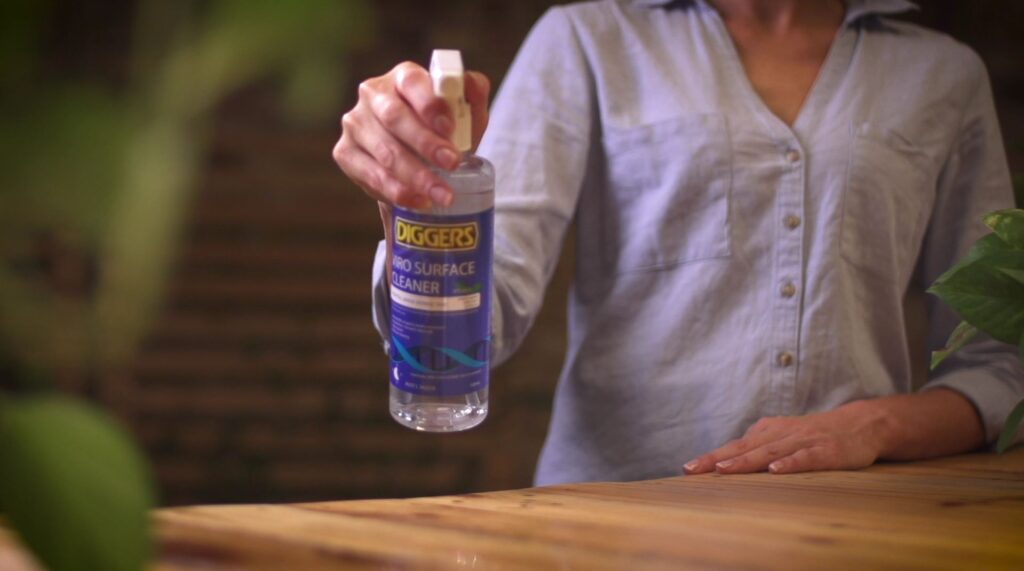Reducing harmful bacteria and viruses is important for your health. In the wake of the COVID-19 pandemic, more emphasis than ever is being placed on disinfecting the benches, desks, counters and other contact points that we interact with every day.
The way that you use a sanitising spray on your surfaces may not be as effective at killing germs as you think. Remember to always read the label. According to a survey by the American Cleaning Institute, 42% of respondents are not disinfecting their surfaces properly.1
Jump to tips:
- Clean before disinfecting
- Allow the surface to remain wet for the contact time recommended on the label
- Try Viro Surface Cleaner
We trust in the power of disinfectants to protect us from germs. 8-out-of-10 respondents in the same survey were either somewhat or very confident that cleaning products protect against bacteria and viruses, like COVID-19.
However, to actually achieve 99.99% elimination of surface germs, we have to remember to follow the instructions on the products that we use.

1. Clean before disinfecting
Did you know that ‘cleaning’, ‘sanitising’ and ‘disinfecting’ actually have very specific meanings?
‘Cleaning’
When you clean with a detergent or general purpose cleaner, you’re removing dirt, grease and grime from the surface. While this may not kill germs, it does remove some of them from the surface. Using a disinfectant on a surface that is not clean reduces how effective that product is at eliminating bacteria and viruses.
‘Sanisiting’
Sanitising means to reduce the number pathogenic or food-spoilage microorganisms to a sanitary level. A ‘sanitiser’ must be suitable for use on surfaces with which food for human consumption may come into contact.
‘Disinfecting’
When you disinfect a surface with a chemical that’s designed to kill germs, you’re deactivating those microorganisms. While we may think that we’re ‘cleaning’ when we use household disinfectant spray or wipes, those products may not remove dirt and grime.
When your surfaces aren’t clean before you sanitise and disinfect, it can reduce the effectiveness of your disinfecting chemicals.

2. Allow the surface to remain wet for the contact time recommended on the label
How often do you read the instructions on your disinfectant product? There may be one very important step that you’re missing, which could be compromising your safety against germs. Every disinfectant takes time to kill germs. Once you’ve completely wet a surface with disinfectant, you must allow it to work over the time specified on the label before wiping off any excess with a paper towel.
Simply spraying a disinfectant on a surface and then immediately wiping it away may not ensure that bacteria and viruses are effectively reduced.
The label on your disinfectant will tell you how long to leave it, before wiping away any excess left on the surface.

3. Try Viro Surface Cleaner
Forget using several products to completely clean, sanitise and disinfect a surface. The 3-in-1 Viro Surface Cleaner eliminates the need to use multiple chemicals to kill germs around your home or business. Its unique active ingredient does this with zero harsh chemicals or alcohol.
Developed in Australia by the trusted Diggers brand, Viro Surface Cleaner removes dirt, dust and grime particles from your surface to prepare it for hospital-grade disinfection. It can then kill 99.99% of germs, bacteria and viruses2 (including COVID-19).
Make your cleaning quicker and easier, with Viro Surface Cleaner.
1: This survey was conducted in the USA. Results may not apply in Australia.
2: Coronavirus (incl. SARS-CoV-2), vaccinia viruses